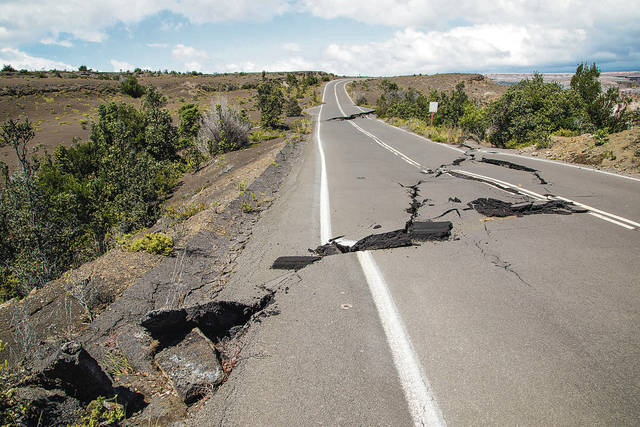The Hawai‘i Volcanoes National Park, Opens in a new tabhaving taken its first steps toward recovery in the wake of extensive damages caused by the Kilauea eruption, has set a reopening date of Sept. 22, National Public Lands Day, for some of its main attractions.
A lull in earthquake activity has allowed parks staff to assess damages and repair water lines, according to park spokeswoman Jessica Ferracane. While very limited areas are expected to reopen,with restricted hours, it’s a momentous occasion.
“We are all so excited and very hopeful,” said Ferracane, who noted Wednesday was the 104th day since most of the park was closed.
Most likely, the Kilauea Visitor Center Opens in a new tab near the park entrance will reopen, she said. Park officials have
restored non-potable water to the visitor center. The
water line repairs, however, are simply “band-aid” fixes, she said.
Park officials are also trying to find a viewing area where the public can see firsthand the dramatic changes that have occurred at Halemaumau Crater.
“We’re working really hard to determine where that
will be because we know that’s what visitors will
want to see,” she said. “That’s a priority.”
Some possibilities include the Kilauea Iki overlook Opens in a new tab or Keanakakoi, but no decision has been made yet.
U.S. Geological Survey scientists have documented the impact of about 60 collapse events at the Kilauea summit with energy equal
to a 5.0 magnitude earthquake. The events have
led to slumping, or the sloughing off of parts of the rim and inside walls.
At a depth of more than 1,200 feet, the crater is four times deeper than it was
before the eruption began. Its diameter has more then doubled. Parts of Crater Rim Drive, which had been closed since 2008, actually fell into the crater during a collapse explosion event,
as did a portion of the
Halemaumau overlook
parking lot.
The Jaggar Museum
and overlook will not be reopening in September due to extensive damage, said Ferracane. Nor will the popular Thurston lava tube, which is still being evaluated.
A National Park Service geomorphologist on Wednesday began evaluating the ground for cracks, rockfalls and other damage, although he stopped in the afternoon as preparations for Hurricane Lane got under way.
A team will also evaluate the cliffs beneath Volcano House and if they are stable, then visitors can return.
Other positive signs include what appears to be a healthy nene, or Hawaiian goose, population that seemed to have survived the eruption, said Ferracane. Koae kea, or white-tailed tropicbirds, have
also been seen flying at
the crater.
“It’s just mind-blowing
to see that,” she said. “The fact that they’re still at the crater is an amazing testament to the resiliency of our native species.”
The park suffered from constant, seismic activity over the past three months which resulted in layers of volcanic ash over its picnic tables, as well as rockfalls, sinkholes and fractures on the Jaggar Museum’s deck and on hiking trails, parking lots and roads, including Highway 11.
There has no been a
collapse event at the Kilauea summit since
Aug. 2. USGS on Aug. 17 lowered the alert level of Kilauea to watch from warning, but said earthquakes and collapse events could recur at any time.
The park’s partial reopening is welcome news for
Hawaii County and many tour operators who rely on it as a prime attraction. A report by NPS Opens in a new tabestimated about 2 million visitors to the national park in 2017 spent $166 million in communities near the park and supported 2,020 jobs in the area.
Still, considering the
extent of the damages, there is a long road ahead.
“We have the difficult task ahead of us of identifying what we can safely open,” said park superintendent Cindy Orlando in a news release. “Our first
step will be bringing staff back into the park, while getting assessments done. National Public Lands Day is our goal but not definitive.”




